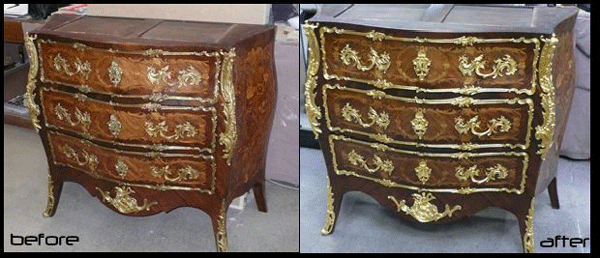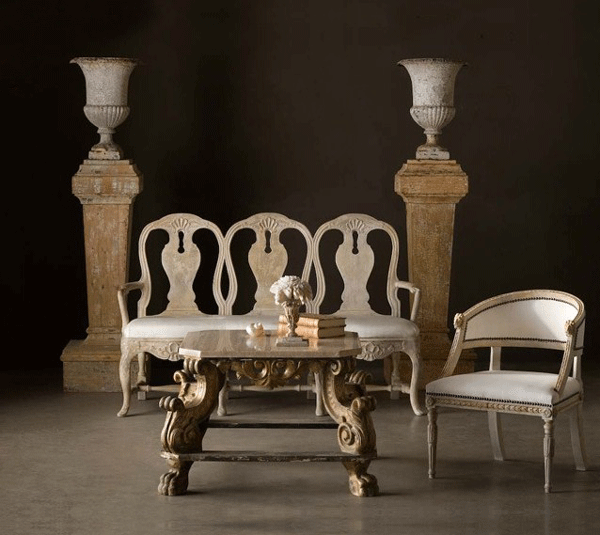Useful Tips For Antiques Restoration
Antiques can be delicate and sometimes fragile or they can be large, sturdy pieces, either way some antiques you may buy might not be in mint condition. There is a certain joy that comes in making something old look new and shiny again, but antiques restoration can be a tricky process and if not carefully executed then you can make a piece look worse.
Antiques should always be handled with care and restoring a piece correctly can make the value of your piece go up incredibly. Below we’ll go over a few tips on how to carefully examine, treat, and restore any antiques you may have that need to be spruced up a little.
Keep Organized
How many times have I heard that someone has pulled apart there antique for restoration only to lose a piece, not remember how to put it back together, or not sure which piece goes where. For this reason, if you need to pull apart your piece, make sure you have a large flat surface or a large space available. The next thing you should do is when you’re pulling it apart, make sure you put the pieces in order of which you dissembled your piece. This way when it comes time to put it back together you know the order of your pieces.
Keep It Clean
You want to keep your space tidy as well as your antique so make sure you choose the right cleaning products for whatever materials your antique is made from. For example, if you were to use laquer thinner on plastic, you will probably end up regretting it. If you are ever unsure on what to use, start with mild soapy water and go up from there. Remember to clean everything including any nuts, bolts, and joints as they are probably a bit rusty.

Stripping Paint
If your antique has chipped paint and you plan on giving it a fresh coat, you have one of two options. The first is to sand the old paint off until the surface underneath is smooth. Most people use sandpaper for this as it’s slower and you can make sure you don’t damage anything. The second way you can choose to do this is to strip all the paint off completely by using a paint stripper. A citrus based paint stripper seems to be the most popular choice as you can work with them inside.
Take Your Time
You never want to rush anything while restoring something as valuable or fragile as an antique. If you paint it and it doesn’t quite turn out the way you like, then don’t try to layer on more paint or fix anything. Sleep on it, wait till the paint drys. This way you will be able to see more clearly what it looks like and if there are any bad spots that you can sand it down and start over. It will always turn out better and look nicer if you slow it down and not rush.
Plan It Out
Sometimes you might want to take a step back and really think about what you are doing and why you are doing it. If you are maybe planning to sell the item then you might not want to change too much of the way it looks. Some people put a bigger price on original finishes and that kind of thing. If you plan on using this piece for yourself though, you should really think about what you want most out of the finished product.
Play It Safe
You really need to be smart when it comes to antiques restoration and you need to play it safe. If something is really old and it comes with the original electrical wire, you should always replace it first before trying to test the old one out. You never know if there is any damage that could shock you or burn out the electrical in your whole house. Something that old is bound to have faults so you should do the logical thing and replace any old wiring.

Is It Worth It?
You should always question something when spending a lot of money is involved and you should always ask yourself if it is worth it. If you are restoring something for resale, then you should look at the price of restoration costs and what you might actually get for selling it. If it is something for your home then the choice is really up to you and how much you might love the piece.
Keep It Original
If you are repainting the antique you are working on and are planning to sell it, then your best bet is to stick to the original colour. Most of the time people are looking for a piece as close to the original as it can possibly get. The only other time you might want to try a different colour is if you are going to be selling it to a collector who you have already arranged a deal with and what colour they wish the item to be.
Relax
You need to take your time and relax; you can easily get frustrated when trying to restore something even if everything is going right. Concentrating on something for that long can easily bring out frustrations. So get up, go outside for a while or do something else, find a way to unwind and relax and then come back when you feel like you really want to work on the piece. You will feel so much better than trying to force the work to happen and you will always be a little sloppier than if you are feeling inspired.
Love What You Do
Loving what you are doing is an essential part of the antiquing world. If restoration and antiquing bring out the joy in you then you should continue to do so; doing something just for the money is not worth it. Someone who loves what they do will always be able to restore pieces way better than someone without passion. If you are still unsure on how to go about antiques restoration there are plenty of professionals on there for hire that have the needed experience.






